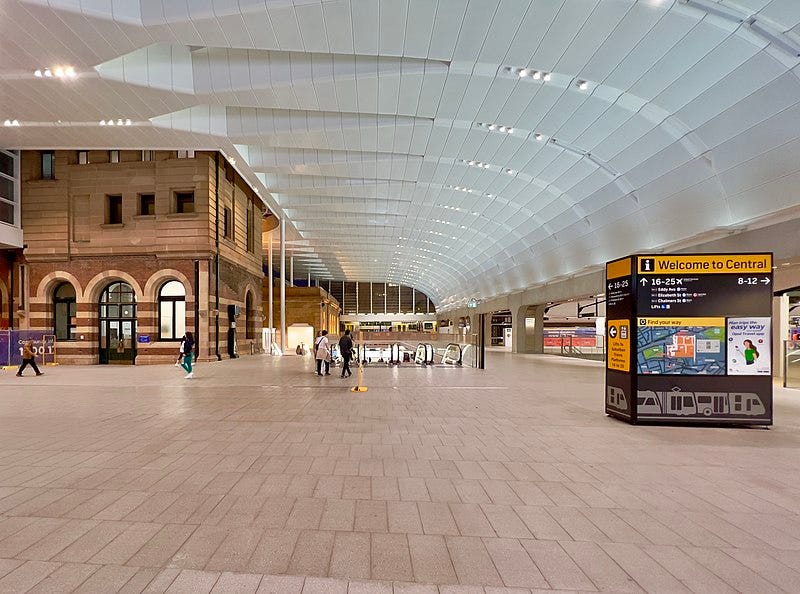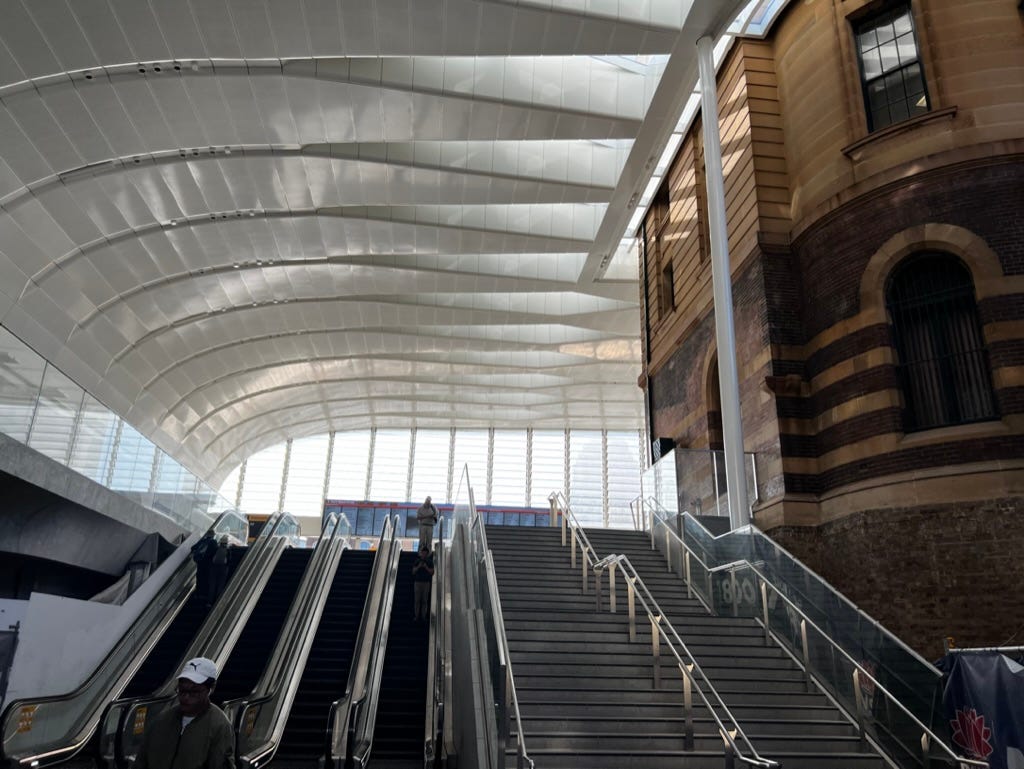Enveloping the Envelopes
Sometimes the station is the destination.
Several classic train stations have been enveloped by larger, more modern superstructures or have seen significant modern additions. Some notable examples include:
St. Pancras International, and Kings Cross Stations London: St. Pancras station, a Victorian-era construct, saw the addition of a modern extension to serve as the terminus for Eurostar trains connecting London to Paris and Brussels. The adjacent Kings Cross has seen modern extensions which integrate with the original structure, including the modernised Western Concourse.
Gare de Strasbourg, France: The original 19th-century station was enveloped by a large glass canopy in 2007. Designed by architect Jean-Marie Duthilleul, the contemporary glass façade now surrounds the historic building, creating a contrast between old and new.
Atocha Station, Madrid: The original Atocha Station, dating back to the 19th century, has been integrated into a much larger and more modern transportation complex. A new terminal building was built adjacent to the old station, which was then converted into a lush tropical garden and waiting area for passengers.
Sydney now joins the club, with the gorgeous remodel of Central Station, and the addition of the new Central Walk and remodel of the Northern Concourse, all in preparation for the under construction Sydney Metro (2024???). More is coming. While TfNSW often gets bashed, this came out really well. If you visit Sydney and you are reading this, miss the next train and wander around, sometimes the station is the destination.
These examples showcase how classic train stations can be integrated into modern superstructures while recognising their history and preserving their architecture.
If this happens on average once a century, we imagine a hypothetical future scenario where a massive superstructure encases the new train station superstructures that have been constructed around 19th-century train stations. This might be done to preserve the historical significance of these stations AND the historical significance of their extensions and original encasing superstructure.
Trains stations, like cities themselves are a palimpsest.





This architectural typology that has been used for decades across Europe, of creating a dissonance between the original heritage structure and the new, so that you know where the future began, is a welcome addition to large scale civic infrastructures. It is still difficult as our Aurecon engineering team can attest, to avoid the heritage police even when trying to protect existing structures. But the effort at Sydney Central is critical to set the identity for an entire new precinct. While the station may be a destination, the entire southern end of the city is to be revitalised linking the station, the university precinct (3 universities within 1km) and commercial and social structures. Central will once again be central. And the light rail will also connect the 40 platforms to the rest of the downtown. Actual integrated land use and transport planning, decades in the making, seeing the light of day. A combination of two layers of government across multiple agencies + public and private capital creating a renewed economy, place, experience and sensory delight. The short term news cycle can’t deal with the long-term truth. This stuff is incredibly difficult, complex in imagining, designing, funding, delivering. And yet there it is. Somebody should organise a march to demand more of it - Town Hall Station and Pitt and Park Metro next! Wynyard is already reborn. It all happens quietly. And the thousands of people involved should all be very proud of these fantastic achievements.
Somehow this reminds me a bit of some of Zaha Hadid's works.